As we approach the end of 2017 and prepare for a new year of watch releases in 2018, we wanted to take a look back at some of the most noteworthy timepieces that came out this year. Check back each day this week for a new list focused on everything that 2017 had to offer. — The WatchTime editors
The chronograph segment of the watch market offers up one of the more accessible complications in the entire industry. It’s simple to use, can accomplish a variety of everyday tasks, and gives off a rugged-yet-stylish vibe. All of this also makes it one of the more popular kinds of watches for horological veterans and newbies alike (it’s by far the kind of watch we get the most questions about from non-enthusiasts). Every year, we see hundreds — if not thousands — of chronographs flood into retailers and onto wrists, but there are always a few that stand a cut above the rest. Here is our list of some of the most remarkable chronographs of 2017.
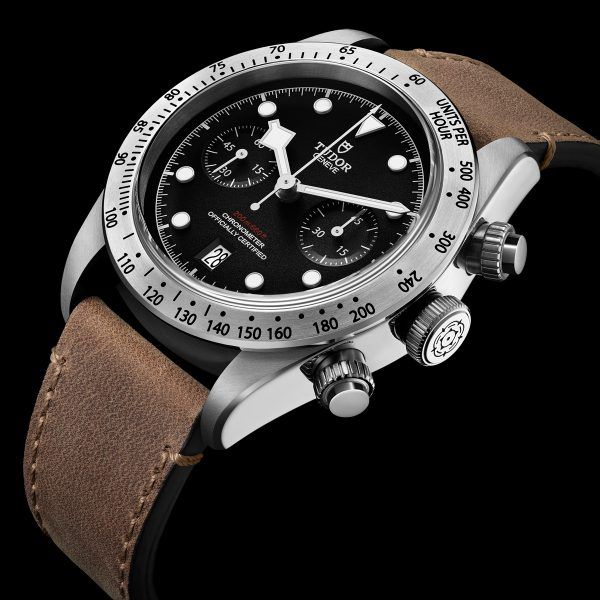
Two of the watch world’s heavyweights pooled their expertise to develop one of 2017’s most buzzed-about timepieces. The Tudor Heritage Black Bay Chronograph adds a new, sporty complication to the popular Black Bay collection, and does so with the aid of a new movement sourced not from big brother Rolex but from stopwatch specialist Breitling. Outwardly, the Tudor Black Bay Chronograph boasts all of the vintage-inspired features that Black Bay fans have most likely come to expect, plus some intriguing extras: the hallmark “Snowflake” hands, the domed dial and crystal, the large winding crown from the 1958 Tudor “Big Crown” dive watch. As it does on other Black Bay models, an engraved, black lacquered Tudor rose emblem appears on the case’s screw-down crown, here flanked by chronograph push-pieces. These characteristic elements are joined by two hollowed-out subdials at 3 o’clock and 9 o’clock for the 45-minute chronograph counter and running seconds indication, respectively, and a date window at 6 o’clock. The 41-mm, 200-meter water-resistant stainless steel case is topped by a fixed, circular satin-brushed bezel with an engraved tachymeter scale. The chronograph pushers are said to have been inspired by those used on early Tudor chronograph watches. The real intrigue, for watch aficionados, lies on the inside of the timepiece: the high-performance Caliber MT5813 movement, based on Breitling’s automatic, integrated-chronograph Caliber B01. Introduced in 2009, on the occasion of Breitling’s 125th anniversary, as its in-house base movement of the future, Caliber B01, and its various descendants have served ably in many Breitling watch models since. The recent collaborative effort by the two brands — under a veil of secrecy right up until the eve of Baselworld — has yielded a two-fold result thus far. Tudor gets the B01 Caliber on which to build its first “independent” chronograph movement, while Breitling, in turn, acquires the use of Tudor’s own in-house base movement, Caliber MT5612, for its Superocean Heritage II model. Everything else you need to know can be found here.
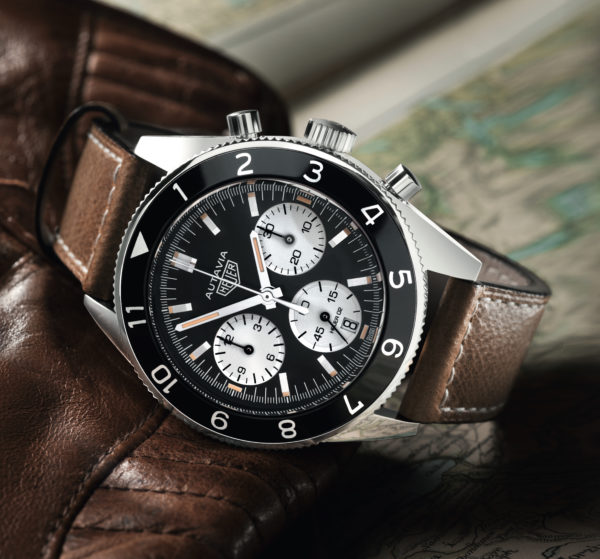
Back in 1962, TAG Heuer — back then, just Heuer — introduced the Autavia, a now-iconic chronograph wristwatch for racing drivers that was discontinued in 1986. At this year’s Baselworld, the brand launched a modern version of the Autavia, combining vintage-inspired retro design elements with a modern, proprietary movement. In 2016, TAG Heuer conducted an interactive online campaign called the “Autavia Cup,” in which more than 50,000 of the TAG Heuer brand’s diehard fans voted for which one of 16 vintage Autavia models would be the template for the planned reissue of the Autavia this year. The winner was a 1966 model nicknamed the “Rindt,” which Jochen Rindt famously wore during his racing career. Borrowing faithfully from many aspects of the vintage Rindt model, the modern-day TAG Heuer Autavia has a 42-mm stainless steel case (enlarged from the 39-mm diameter of the original) with a bidirectional, notched bezel made of black aluminum; beveled lugs; vintage-style “mushroom” chronograph pushers and a ridged crown; a black dial with three white, snailed subdial counters; straight hour and minute hands; and polished steel baton indices filled with a special beige Super-LumiNova whose color is meant to mimic the aged patina of a vintage watch. The logo on the dial is not “TAG Heuer” but the original “Heuer,” clearly evocative of the watch’s ’60s forebear. A contemporary touch not found on the historical model is the date, which is located in a window at 6 o’clock. The new Autavia ended up as a fan favorite for many people this year and it even ended up winning the WatchStars 2017 “Design” award. It also looks to be a part of the TAG Heuer collection moving forward as two more variants were released as the year went on: a special edition for the Middle East market and one honoring Jack Heuer’s 85th birthday. Click here for more details on the new Autavia and its history.
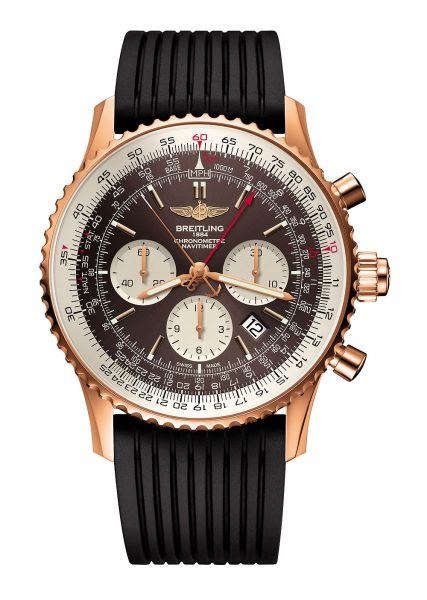
One of the most impressive releases from Breitling this year was the Navitimer Rattrapante. The watch’s movement, Breitling Caliber B03, fittingly makes its debut inside the case of the Navitimer, one of Breitling’s most iconic models. It continues the company’s industry-influencing historical role in the field of mechanical chronographs, which includes such milestones as the first chronograph with an independent push-piece, in 1915; the first with a second independent push-piece, in 1934; one of the first self-winding chronograph movements, in the pivotal year of 1969; and the development of the classic Duograph in 1944, a highly collectible piece with an extra-thin split-seconds chrono movement, which could be considered this new model’s spiritual ancestor. The 45-mm case of the Navitimer Rattrapante is available in either stainless steel or 18k rose gold; the latter version has a clear sapphire caseback and is limited to 250 pieces. The “Panamerican bronze” colored dial on both new versions is new and exclusive to Breitling, and serves as a contrasting backdrop to the three silver-toned subdials (30-minute chronograph counter at 3 o’clock, 12-hour chronograph counter at 6 o’clock, small seconds at 9 o’clock) and the silver-toned inner rotating bezel with circular slide rule, a useful tool for aviators that has been a fixture of Breitling Navitimers since the model’s debut in 1952. Learn more here.
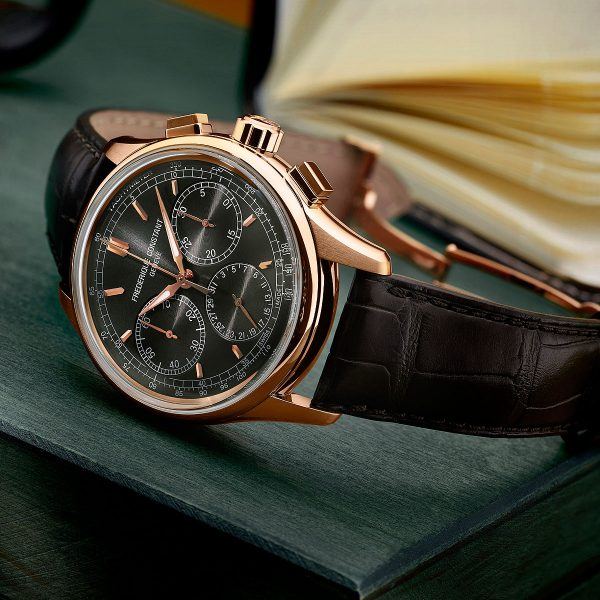
Frederique Constant — which gave the watch world its first perpetual calendar priced under $10,000 in 2016 — adds another affordable high complication to its stable at Baselworld 2017 with the launch of the Frederique Constant Flyback Chronograph Manufacture. The watch contains an all-new in-house movement, Caliber FC-760, whose flyback chronograph complication is inspired by models from the 1930s. The column wheel that governs the chronograph’s start, stop, and reset functions rotates on bearings; unlike conventional column wheels, which have several columns, this one is star-shaped. Working in unison with the operating lever, which is controlled by the start/stop push-piece, this star-shaped wheel is responsible for the mechanism’s exceptionally smooth operation. Frederique Constant’s expert team of watchmakers and designers engaged in a long process of drawing, designing, and prototyping on the way to creating the final timepiece, struggling with the necessary geometry, forces, and meticulous adjustments required in developing one of the most difficult horological complications, the flyback. Read up on exactly how Frederique Constant was able to do this here.
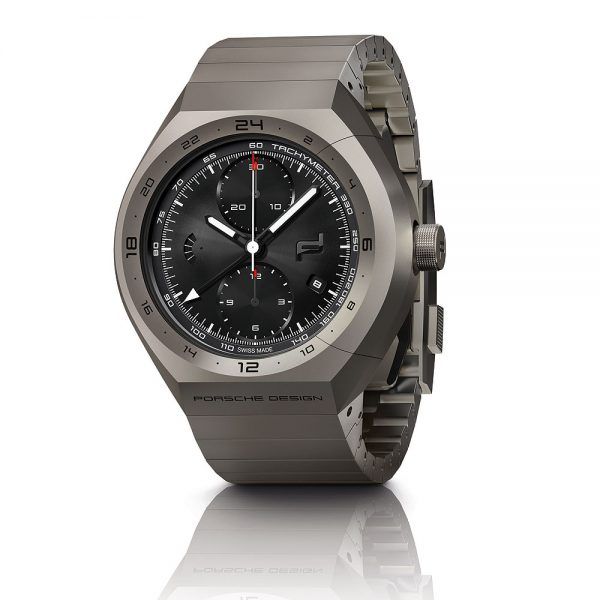
There have been timepieces that occupy the intersection between automotive design and classical watch design for nearly as many years as there have been timepieces made for the wrist. But when your company is the Porsche Design Studio and your founder is Ferdinand A. Porsche, the man who created the Porsche 911, one would expect that the automobile influence on your watches would be somewhat more pronounced than most. Porsche Design watches have succeeded and failed at this mandate to varying degrees over the years (and over many partnerships, with established watchmakers such as IWC and Eterna), but with this year’s introduction of the Porsche Design Monobloc Actuator GMT, an extension of its flagship Chronotimer collection, the company hits a technological and horological home run. Check out our hands-on review here.
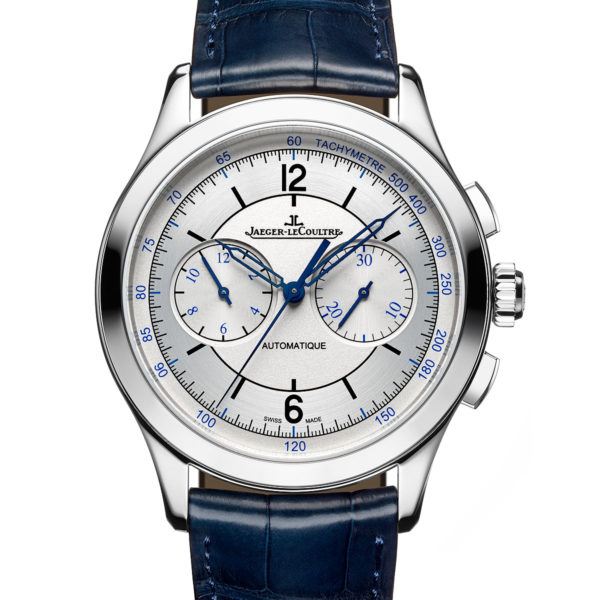
The Master Chronograph, like all the Master Control models launched at SIHH 2017, has a classical, vintage-inspired dial; contains an automatic mechanical movement, made in-house at the Jaeger-LeCoultre manufacture in Switzerland’s Vallée de Joux; and features navy blue details on its dials — in the skeletonized baton hands, central chronograph seconds hand, subdial hands and numerals, and minute track numerals. The Master Chronograph, powered by Jaeger-LeCoultre’s self-winding Caliber 751G, features the collection’s most contemporary design, albeit with several vintage influences. The dial’s bi-compax layout has two chronograph subdial counters — for 12 hours and 30 minutes — at 9 o’clock and 3 o’clock, respectively. The blue color in the subdials, which are enhanced with a circular guilloché motif, is echoed in the blued, stainless steel hands and in the tachymeter scale around the dial’s outer perimeter. This sporty-luxury timepiece has a 40-mm diameter case, 11.7 mm thick and water-resistant to 50 meters. Its movement offers a 65-hour power reserve. Perhaps most importantly for those who crave not just beauty but accuracy in their luxury watches, the Master Chronograph has undergone the battery of rigorous tests necessary to earn Jaeger-LeCoultre’s “1000 Hours Control” in-house certification — a process that was inaugurated 25 years ago for the first Master Control timepieces but which has since been extended to all of the brand’s models. Watches are tested in six positions over a six-week period to reproduce the conditions they will be worn under, taking into account temperature variations, accidental impacts, power-reserve capacity, and water resistance. Find out more here.
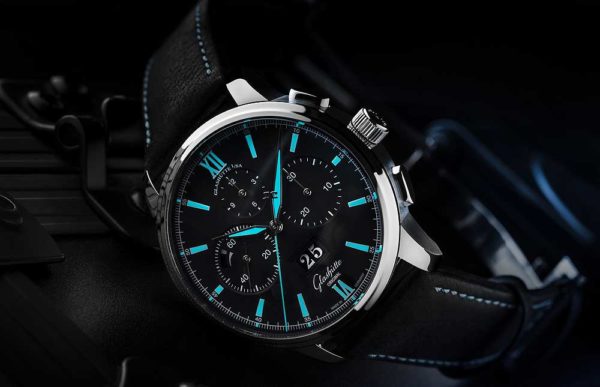
The Glashütte Original Senator Chronograph Panorama Date quickly became one of our favorite watches of 2017 after seeing it at Baselworld. Can you guess why? It’s because of that bright blue lume that made it one of the most distinctive watches of the year. Inside the watch, you can find Glashütte Original’s recently introduced in-house Caliber 37. The watch’s deep black dial features high-contrast white print, and white gold hands, applied indices, and applied Roman numerals at 6 and 12 o’clock. The watch’s namesake panorama date, a hallmark of this Saxon luxury brand, appears in the lower half of the dial, beneath the chronograph counters and small seconds display, the latter of which also incorporates a power-reserve indication. You can find out more about this blue beauty here.

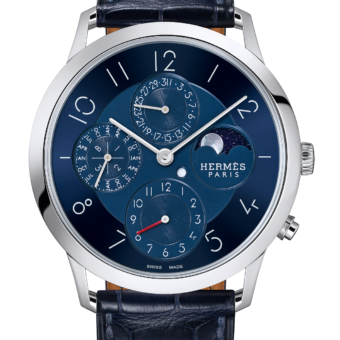

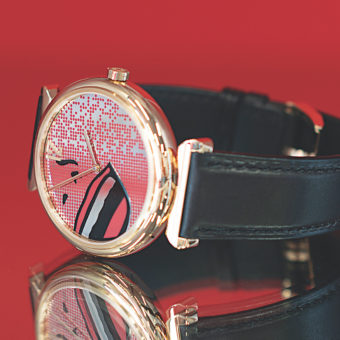

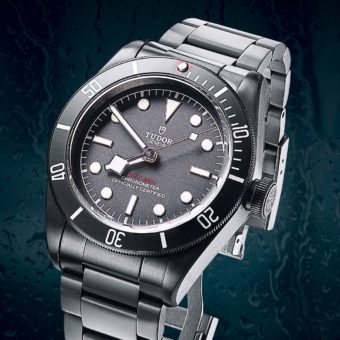

Thanks for a fun look back @ 2017!Despite my personal thoughs on the House of Tag, I really enjoyed your selection. Thank you for all your contributions this past year – 2018 should be a lot of fun!